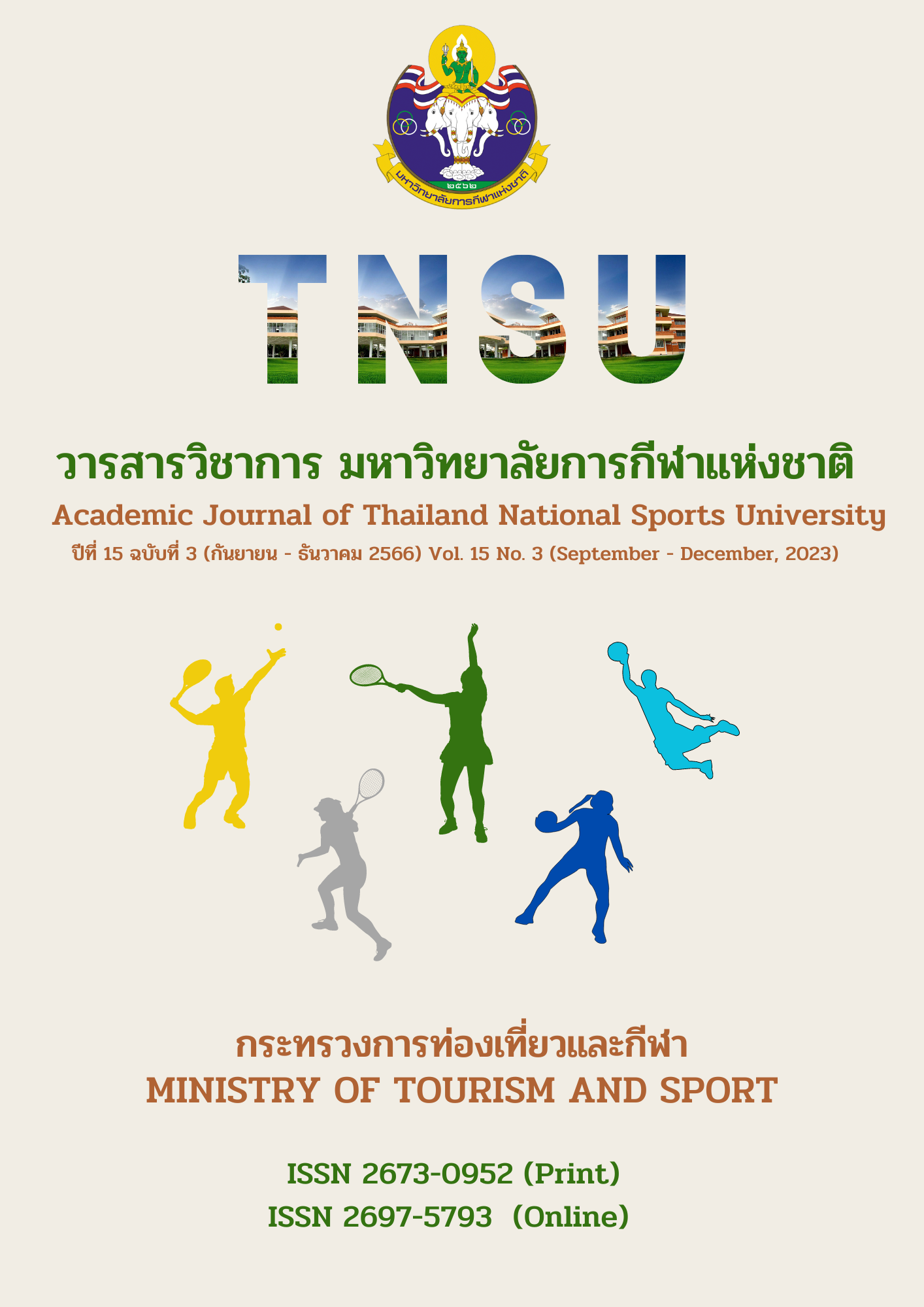RELATIONSHIP AMONG INFORMATION EXPOSURE, PERCEPTIONS, ATTITUDES, AND APPROPRIATED SEXUAL BEHAVIORS FOR HIGHER SECONDARY SCHOOL STUDENTS
Main Article Content
Abstract
This research was a cross-sectional analytical study with the objective of studying the relationship between information exposure, perceptions, attitudes, and desirable sexual behaviors among high school students. The sample 450 was from samples using multistage randomization. The research instrument was an online questionnaire. The data were analyzed using frequency distribution, percentage, mean and standard deviation, and Pearson's correlation coefficient statistic. The results of the research were as follows: The sample group had a low to moderate level of information exposure, perception, and desirable sexual attitudes and behaviors at the lowest to the highest level on the internet (online lessons) which are the most exposed source of information. The issue that was most perceived was researching methods of sexual health care. (genital washing, using sanitary napkins). The most attitude issue is that if I have sex, I will always wear a condom. And the most desirable sexual behavior that showed the behavior was that the students had never had sexual relations with another person overnight (One Night Stand) with a stranger. In relation to the information exposure, perception, and attitudes toward the desirable sexual behavior of high school students there were a positive and negative correlation (r = -0.16, -0.09, and 0.31 respectively). The results showed that information exposure, perceptions, and attitudes were related to desirable sexual behavior among high school students.
Article Details

This work is licensed under a Creative Commons Attribution-NonCommercial-NoDerivatives 4.0 International License.
The published article is a copyright of the Academic Journal of Thailand National Sports University. The passage appeared in each article in this academic journal is a perspective of each author which is not related to the journal. Each author is required to be responsible for all components of his/her own article. If there are any mistakes, each author must be responsible for those mistakes on his/her own.
References
Akkarawat Rasawad, & Suparuek Phothiphairat. (2021). Communication behaviors and sexual behavior learning of youth in Chiang Mai Province. Journal of Mass Communication Faculty of Communication Arts Chiang Mai University, 9(1), 26 - 51.
Chakkrit Pinyapong, Thanyalan Phimsen, Nuntika Kbla Niphawadee Sisanit, Piyaphaphon Onwong, & Waraporn Muangmod. (2019). Perception of gender roles and gender attitudes of adolescents in an educational institution, Uttaradit Province. Journal of Science and Applied Science, 19(2), 1 - 13.
Chanetti Milintanggur. (2019). Factors affecting attitudes toward premarital sexual behavior. Population Science Journal, 35(1), 92 - 106.
Department of Disease Control. (2019). Evaluation of information perception on disease and health hazards, disease prevention and control behavior and image of the Department of Disease Control of the Thai people for the year 2019. Bangkok: Agricultural Cooperatives Congregation of Thailand.
Department of Health Service Support. Division of Health Education. (2017). Report on the study of access and use of information for food consumption among working age groups. Division of Health Education. Department of Health Service Support.
Faul, F., Erdfelder, E., Buchner, A., & Lang, A. G. (2009). Statistical power analyses using G*Power 3.1: Tests for correlation and regression analyses. Behavior Research Methods, 41(4), 1149 - 1160.
Li, X. (2018). Media exposure, perceived efficacy, and protective behaviors in a public health emergency. International Journal of Communication, 12, 2641 – 2660.
Ministry of Public Health. Department of Mental Health. (2020). Teenagers 2020 know how to prevent pregnancy, prevent disease. Retrieved from https://www.dmh.go.th/news-dmh/view.asp?id=3019215/TU_2015_5507030327_3459_3412.pdf
Ministry of Public Health. Path Two Health Foundation. (2020). Teenagers in 2020 know how to prevent pregnancy, prevent disease. Retrieved from https://www.dmh.go.th/news-dmh/view.asp?id=3019215/TU_2015_5507030327_3459_3412.pdf
Path Two Health Foundation. (2020). Teenagers in 2020 know how to prevent pregnancy, prevent disease. Retrieved from https://www.dmh.go.th/news-dmh/view.asp?id=30192
Phanomporn Piyakul. (2016). Sexual risk behaviors of vocational students in Samut Prakan Province (Master’s thesis), Thammasat University. Retrieved from http://ethesisarchive.library.tu.ac.th/thesis/2016/TU_2016_5317030186_3025_5048.pdf
Pinthip Suchartlikhitwong, & Suwaporn Anukulruangkit. (2018). Sexually transmitted diseases. Pediatric Infectious Disease Association of Thailand. Retrieved from https://www.pidst.or.th/A732.html
Pramote Wongsawat, & Pankarin Hoirat. (2020). Factors influencing sexual behavior of secondary school students. Journal of Health and Nursing Research, 36(1), 149 - 163.
Salinee Naewla, & Parinya Phakanon. (2015). Attitudes and sexual risk behaviors of adolescents. Ubon Ratchathani Province. National Academic Conferences and Research Presentations Royal Academic Affairs No. 1 "Building Interdisciplinary mix. Retrieved from http://dspace.bu.ac.th/bitstream/123456789/3756/1/chayarop_Prat.pdf
Sarun Yilansuwan. (2015). Exposure to information, knowledge, attitudes and behavioral tendencies towards social promotion project of the youth leaders of ASEAN and Japan through the Facebook channel Facebook (Master’s thesis), Thammasat University. Retrieved from http://ethesisarchive.library.tu.ac.th/thesis/20.pdf
Schiffman, L. G. & Kanuk, L. L. (2000). Consumer Behavior (7th ed.). New Jersey: Prentice Hall.
Wansiri Prachanno. (2017). Factors affecting sexual behavior of students. Elementary school at the end. Journal of Nursing, 29(2), 39 - 51.
Yada Sriarun, & Walai Israngkun Na Ayutthaya. (2015). A study of the role of social studies teachers in enhancing information literacy of secondary school students. An Online Journal of Education 2015, 10(1), 147 - 160.

